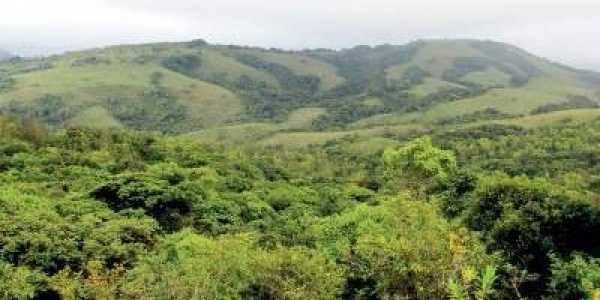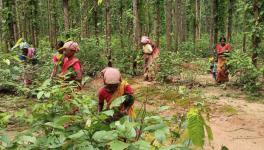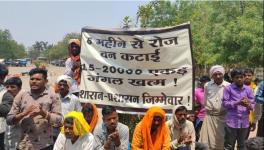Need To Know: Who Really ‘Encroached’ Indian Forests?

Image for representational use only.Image Courtesy : New Indian Express
In response to a right-to-information (RTI) application, the Union government has released figures about India’s forests that are prima facie quite alarming. It has said that the quantum of land that has been encroached upon has grown to 1.3 million hectares. Madhya Pradesh, which accounts for 41% of such encroachments, has seen an increase from 8,077 hectares to 5,34,000 hectares between 2011 and 2019.
In 2011, the then minister for environment and forests had provided a written reply to a question in the Rajya Sabha providing a state-wise breakdown of forest encroachment, which worked out to a total of 1.165 million hectares. In other words, over the past eight years, roughly 1,35,000 hectares of forest land have been incrementally encroached at the rate of 17,000 hectares a year.
Unfortunately, the reply to the RTI query, submitted by environmentalist Akash Vashishtha, does not specify the character of the encroachments, in 2011 or 2019, which forces us to range into the arena of speculation before we get to more solid ground.
The media report on the data provided by the Union ministry of environment and forests (MoEF) suggests that some of this increase is directly or indirectly related to the claims to rights made under the Scheduled Tribes and Other Traditional Forest Dwellers (Recognition of Forest Rights) Act, 2006 or Forest Rights Act. That is, claims to land classified as forests were made by forest-dwelling communities or communities dependent in various ways on forests for their livelihoods. Hence there is a possibility that this increase and, by implication, the phenomenon of encroachment is primarily related to the kind of claims mentioned above, which have created confusion in data sets in different states and Union Territories.
It is possible that the grant of legal rights under the Forest Rights Act has inflated the figures on the encroachment of forests. If that is indeed the case -- though there is no way to make any definitive claims in that regard -- there is no real need for alarm because that would either mean that the statistics merely reflect more accurately a situation that has been in existence at least for decades. Or it would mean that the forest-dwelling population has increased and spread to new areas.
In contradistinction to the claims made, on the one hand, by champions of ‘development’ and, on the other, by dogmatic conservationists who would like to classify more and more forested areas as pristine, it is quite clear that forest dwellers by and large use forest resources sustainably because, literally, their lives depend on it.
If on the other hand the nature of the new or old encroachments tend to divert forest land to other uses, legally or by clandestine means, that would represent a threat to forest cover. Such diversion could be for mining, settled agriculture (think of the Amazon fires less than a month ago), plantations or other industrial activity and would entail the destruction of the forest to make way for new forms of activity, whilst the gathering of forest resources by communities dwelling in or dependent upon forests would imply precisely the conservation of forests. Because without the forests, there would be no forest resources to live off.
Vashishtha has been quoted as saying, ‘It is shocking to look at the latest figures of encroached forest land. India’s commitment to create an additional carbon sink of 2.5-3 billion tonnes of carbon dioxide equivalent through additional forest and tree cover by 2030, as part of its climate action goals under [the] Paris Agreement, seems an uphill task.’ On the face of it, point taken, but we need to unpack this statement and qualify it.
First, as mentioned earlier, we need to find out what the nature of the encroachments is. For instance, does the stratospheric increase in forest encroachments in Madhya Pradesh provide any clue about what kind of activities are being supported by ‘encroachments’, a word that in itself tells us nothing.
Second comes a qualifier for which Vashishtha provides a clue when he talks about ‘additional forest and tree cover’. What we need to do is regenerate degraded forests and create new forest cover through afforestation programmes that will not aim to produce plantation-style forests, but mixed and, therefore, sustainable forests. Forest cover has to increase; obsessing about exclusion to create pristine conditions won’t necessarily help.
Quite apart from India’s commitments under the Paris Agreement, Prime Minister Narendra Modi has recently announced ‘ambitious’ plans for afforestation. Addressing the 14th Conference of Parties to the United Nations Convention to Combat Desertification, Modi revised India’s target for reviving degraded land from 21 million hectares to 26 million hectares by 2030. This, he said, will create a carbon sink of almost 3 billion tonnes, which is actually not so radically different from the Paris commitment. He also claimed that India’s tree cover had increased by 800,000 hectares between 2015 and 2017.
The prime minister also referred to compensatory afforestation (undertaken to balance out diversion of forest land for industrial use) and monetary compensation. But as with a number of schemes and proposals set out by the Union governments formed in 2014 and 2019, these statements lack clarity and are not backed by solid data. How much, for instance, of the forest cover that has been created over, say, the past decade has been by way of compensatory afforestation and how much as new forest cover?
Obviously, the first does not increase the magnitude of India’s carbon sink, while the second one does. What is the relation of the restoration of degraded lands (or degraded forests) to afforestation in the context of the composite target for creating the amount of forest cover needed to fulfill the carbon-sink target?
There are other more arcane questions which are best left aside, because the answers to them are unlikely to be forthcoming. But just by way of exemplification: different kinds of forests have different capacities to absorb carbon. Do, for instance, the ‘compensatory forests’ being planted match the absorptive capacities of the forests being destroyed?
At the moment, we do not know. What we can say is that greater public debate on issues relating to climate change is necessary on the basis of credible data. It is the duty of the government to generate such data and disseminate them.
Suhit K Sen is an independent journalist. Views are personal.
Get the latest reports & analysis with people's perspective on Protests, movements & deep analytical videos, discussions of the current affairs in your Telegram app. Subscribe to NewsClick's Telegram channel & get Real-Time updates on stories, as they get published on our website.
























